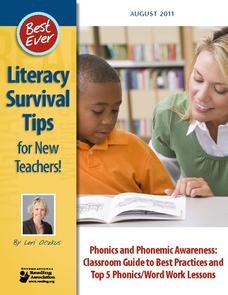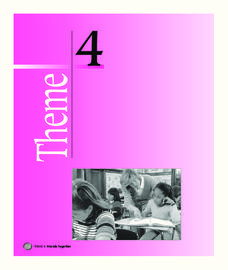International Reading Association
Literacy Survival Tips for New Teachers!
Whether new to teaching or a seasoned pro, this 12-page phonics and phonemic awareness guide is a must for your curriculum library. Everything from a summary of research on the topic to exercises and activities is included.
Texas Center for Learning Disabilities
Second-Grade Comprehension-Based Intervention
Help your youngsters find meaning in the text they read with this series of five intervention lessons. Offering explicit, step-by-step instructions for walking children through shared readings of leveled books, these...
Houghton Mifflin Harcourt
Friends Together: English Language Development Lessons (Theme 4)
Enjoy this thematic friendship unit compiled with ESL lessons to develop strong language development while listening, speaking, looking, and moving. Class members participate in activities covering topics like making friends, asking for...
August House
The Ogre Bully
English language arts, math, science, dramatic arts, and cooking; this lesson has it all! In this multidisciplinary resource, your scholars will take part in a read aloud of The Ogre Bully by A.B. Hoffmire and have a grand...
Houghton Mifflin Harcourt
All Together Now: Extra Support Lessons (Theme 1)
All Together Now is the theme of this series of extra support lessons. The collection aids the instruction of blending sounds and reading high-frequency words through writing and reading sentences. Support also engages pupils...
Curated OER
Pigs Love Pink Pancakes
Students explore the grapheme along with phoneme it represents. The teacher teaches letter reconginition by having the students write the letter and practice the sound. This helps studens investigate the letter faster (p). Students...
Curated OER
Who's in the Shed?
Second graders examine the cover of the book, WHO'S IN THE SHED? and talk about the animals portrayed and the noises they make. They then read the book as a class, looking through the peepholes and making predictions.
Curated OER
The Boy Who Cried Wolf
Second graders listen to the story, THE BOY WHO CRIED WOLF and in pairs, discuss the theme of the book and two things that they liked about it. They then read the book OOPS and discuss the theme of the book identifying the things they...
Curated OER
Something's Fishy
Learners study fish habits and traits. In this marine life lesson, students complete four learning centers of a fish memory game, a fish habitat study, draw and glue fish craft activity, and a fish read-a-thon. Learners complete their...
Curated OER
A DAY IN THE LIFE OF A NURSE
Second graders examine the front cover of the book, A DAY IN THE LIFE OF A NURSE and discuss with a friend about a time they visited the hospital. They then read the book together as a class and review events. They make a list as a class...
Curated OER
Language Arts: Word Recognition and Mental Images
Students read short stories containing Dolch sight words and describe the scenes and answer comprehension questions. After relating the stories to their own experiences or observations, they draw pictures illustrating a scene from the...
Curated OER
Daily Lesson Plan for a Struggling Reader
Strategy-based programs that are executed with consistency are the best for achieving growth in any learner with a learning disability. Here is a seven-step lesson plan that is highly structured and is intended to help learners with...
Curated OER
Sentences for Sight Word Dictation
Improve your learners' reading and writing skills with a set of sentences designed to help pupils work with sight words. The teacher dictates while the pupils write; this is followed by discussion. ...
Houghton Mifflin Harcourt
Talent Show: Extra Support Lessons (Theme 6)
Kids who need extra support with the concepts in the Houghton Mifflin Harcourt thematic unit entitled "Talent Show," will benefit from the exercises and activities found in this 32-page packet.
Curated OER
What If?
Second graders read WHAT IF? up to the page that ends "Suddenly, across the field they saw..." and discuss how the animals are feeling. They then discuss their feelings and in pairs discuss a possible ending to the story.














